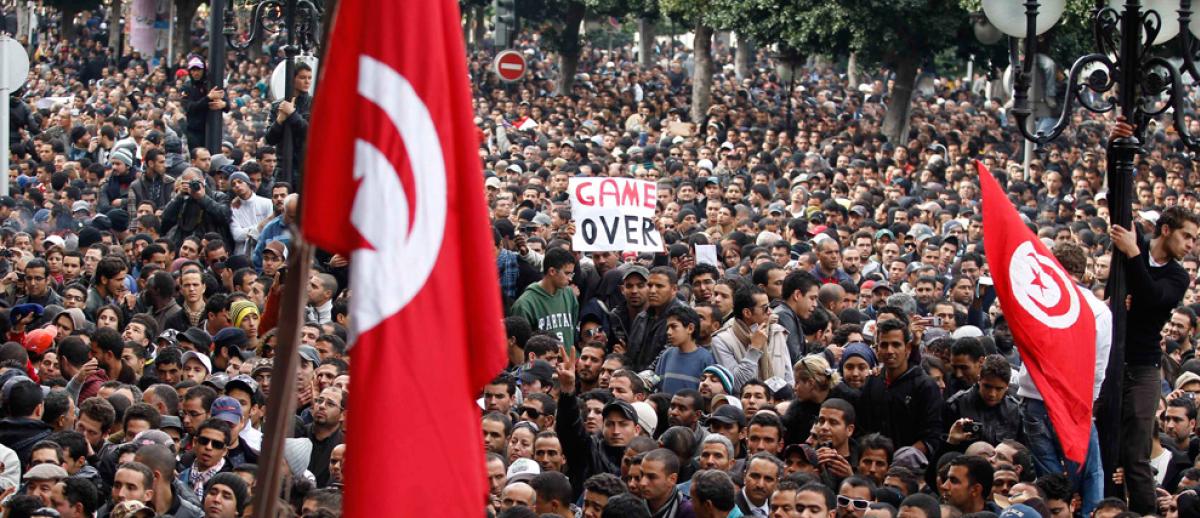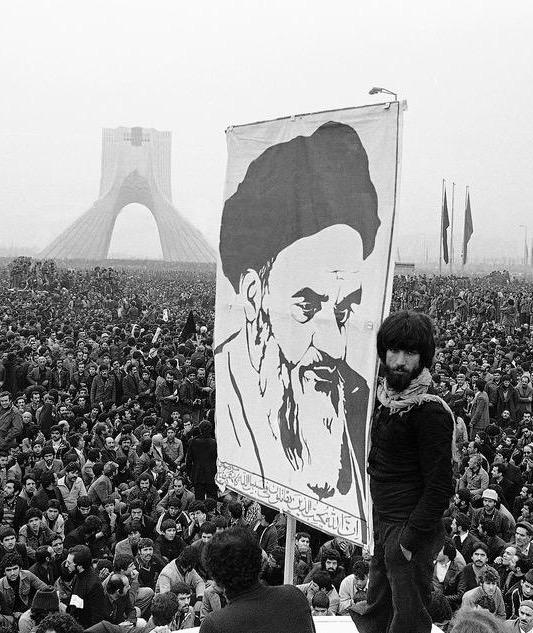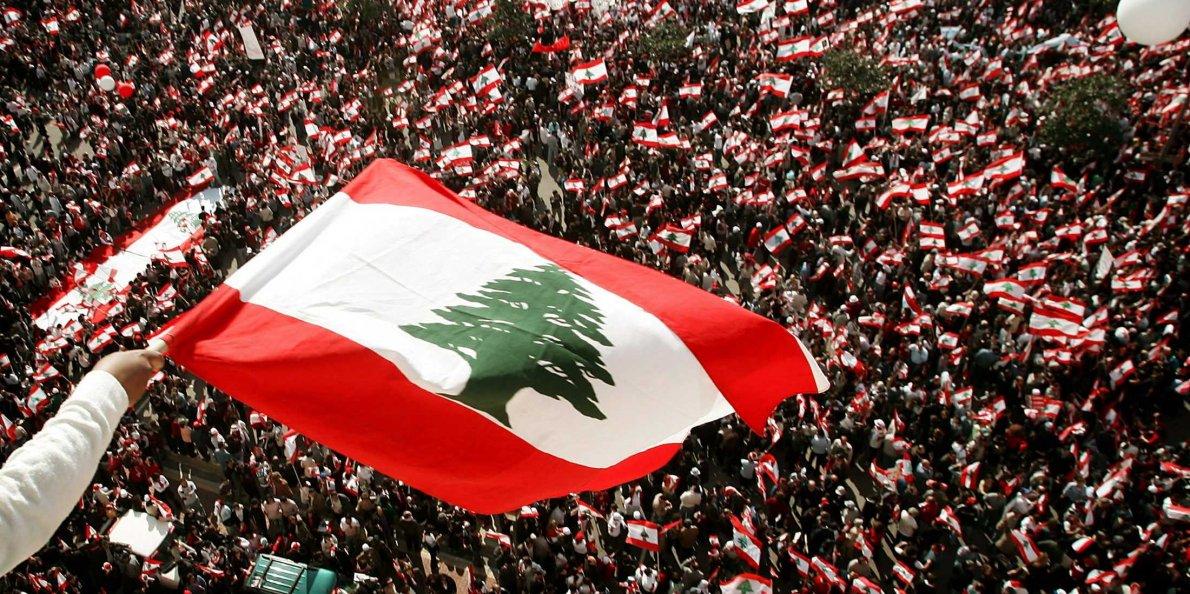Naming the Revolutionary Moment
archive


Naming the Revolutionary Moment
The most tragic form of loss isn’t the loss of
security; it’s the loss of the capacity to
imagine that things could be different.
- Ernst Bloch, The Principle of Hope
Revolutionary moments, like a thunderbolt from the blue, tear open the world of possibilities—possibilities that are articulated, albeit in ambiguous terms, in public imaginations of the good life. Revolutionary moments, from the time of the French revolution to the recent Arab uprisings, have also been stifled by institutional restrictions and the demands of post-revolutionary Realpolitik. Such demands often compel revolutionary subjects to abandon their essential desire for possible realities and instead become content, as Robert Musil lamented in The Man Without Qualities, with a pragmatic sense of real possibilities. Where do we stand today? Are we losing the ability to imagine that another world is possible? Are we losing the ability to imagine what that other world might look like? Are we witnessing today the realization of what Rousseau feared in the mid-eighteenth century about the emergence of a particular form of authority that penetrates mankind’s innermost thoughts and desires?
Much has been written about the paradoxical core of the Enlightenment: its substantive emancipatory outlook and its instrumental oppressive practice. Enlightenment thought advocated a secular eschatology that promoted the pursuit of worldly happiness against the Christian submission to Divine providence. It fostered the desire for earthly riches against the hope for heavenly salvation. Yet revolutions around the globe, most significantly the Haitian Revolution that inaugurated the nineteenth century, most profoundly expressed a public imagination that rested upon a commitment to the world of possibilities.
The twentieth century witnessed a repeated perversion of public imagination. Utopia and utopian thinking increasingly became associated with terror and totalitarianism, rather than with hope and emancipation. From a highbrow philosophical assertion, the end of history turned into an everyday reality that colonized the very essence of imagination. The ability to transcend present and to think of the world anew appeared to be a story the end of which we already knew, so we told ourselves, as the first act was unfolding. Despite restoring faith in the possibility of change, every revolution that once stood at the threshold of a novelty, failed to realize the kind of imaginations and desires that had given rise to them. In every instance, the Realpolitik of existing possibilities colonized the imaginative spirit through which the demands for change were articulated.
Revolutions express a public desire to make history, rather than reproducing it along the same prescribed futures. Revolutions open moments of possibilities to enact historical transformations without predetermined goals. But since the dawn of the age of revolutions, they have always been understood as “that transitory phase” that bridges one stage of history to another. Even Marx, the theorist of revolution, and his successors believed that revolution was a moment of transition, thus limiting the significance of politics to the realization of a predestined future. The evolutionary core of this radical ideology rendered public imagination as mere utopianism, thus confining politics in the prison house of a historical telos.

Anti-Shah demonstration at Shahyad (now Azadi) Tower in Tehran. December 10, 1978.
The Islamic Revolution in Iran in 1979 puzzled western pundits and intellectuals who understood revolutionary movements only with reference to the European experiences. They were confounded by the religious character of a historical movement that was hitherto understood as the most secular expression of social change. European political philosophers who understood revolutions to be the ultimate manifestation of the incessant expansion of the secular realm saw in Iran only a counter-revolution, a momentary pause in the otherwise progressive March of History.
Iranians were dreaming, as Michel Foucault wrote in an essay during his visit to Iran in 1978. It was true, he observed, that there were economic difficulties, political repression, and corrupt administrations. It was also true that they knew that they needed to change the whole country, its economic order, and political system. But, above all, they told themselves that we have to change ourselves. “Our way of being, our relationship with others, with things, with eternity, with God, etc., must be changed, and there will only be a true revolution if this radical change in our experience takes place” (Foucault, Iran the Spirit of the Spiritless World, 1978). Foucault’s Parisian friends and foes found his enthusiasm for the revolution in its religious expression hilarious. They ridiculed the transformative power of a political spirituality that he identified in the Iranian revolutionary movement.
Revolutions express a public desire to make history, rather than reproducing it along the same prescribed futures. Revolutions open moments of possibilities to enact historical transformations without predetermined goals.
In Iran, the revolution spread as a phenomenon of history and, at the same time, as a phenomenon that defied it. With all the ambiguities associated with their political discourse and religious expressions, Iranians intended to think of their future anew and refused to turn themselves into subjects of the discursive authority of a world that is perpetuated in tired conceptions of “History.” The Iranian revolution unfolded without closing the window of possibilities, without subjecting the revolutionary movement to the logic of historical inevitabilities.
More recently, the Arab uprisings that began in Tunisia in 2010 and spread throughout North Africa and the Middle East reminded us of the perils of the failure to recognize the significance of public imagination. Unlike the Iranian Revolution thirty years earlier, the Arab uprisings not only overtook the streets of major cities and squares but also dominated the global mediascape. The media operated paradoxically both as an instrument of the effective dissemination of revolutionary action and, at the same time, as a means of its discursive restraint. Although by and large the masses on the streets identified their movement as a call for human dignity (kerāma) and an end to social injustice and corruption (kefāya), only a few weeks after their emergence the news reports and scholarly analyses identified the moment as the “Arab Spring.” In order to make the uprisings legible, a great majority of observers in the West situated them in a recognizable assembly of points of references. By naming it the “Arab Spring,” the uprisings entered a conceptual and discursive universe with a written past and a known future direction.

Beirut — March 14, 2005.
The “Arab Spring” was a discourse, in the making for five years, constructed to close the window of possibilities and subject the uprisings to historical inevitabilities. After the massive rallies to condemn the assassination of the former Lebanese Prime Minister, Rafik Hariri, in February 2005, conservative as well as a number of liberal and Left columnists began to ponder the wisdom of George W. Bush’s Middle East project. They considered the mass protests against the Syrian influence in Lebanon, the “Cedar Revolution,” an “Arab Spring” that heralded the fruition of the Bush policy of exporting democracy to the land of unfriendly tyrants. A series of editorial columns in Le Monde, the Independent, Der Spiegel, and Foreign Policy debated whether the “Cedar Revolution” of 2005 invokes the “Spring Time of Nations” in Europe of 1848, Prague Spring of 1968, or Eastern Europe of 1989.
The Arab Spring of 2005 did not materialize the way the pundits predicted. But the uprisings of 2010–11 turned into a full bloom “Spring,” albeit a short-lived one. The dominant explanations of the uprisings interpreted this spring, whether it was a reference to Prague of 1968, or Europe of 1848, as a triumph of liberalism and the discovery of Enlightenment in the Arab world. According to these interpretations, what the uprisings of North Africa and the Middle East expressed was what might be called, in Alain Badiou’s word, “a desire for the West” (The Rebirth of History: Times of Riots and Uprisings, 2012, p. 48). Not only did this view conflate competing interests of the uprising in single reductionist desire for the West, but more significantly, it subjected the public imagination of those who rose up to make history to the slavish unfolding of its inherent logic.
The “Arab Spring” was a discourse, in the making for five years, constructed to close the window of possibilities and subject the uprisings to historical inevitabilities.
The narrative of “Arab Spring” denied the 2010–11 uprisings the singularity with which they could be comprehended and advanced outside the recognized patterns of revolutionary transformation. The discourse of “Arab Spring” devoured the Egyptian liberals and revolutionaries alike and denied them the impetus to articulate the significance of the uprising in its own terms. They considered any deviation from the conventional narratives of revolution to be failure and inauthentic to their movement. The election of Mohamed Morsi of the Muslim Brotherhood invariably and quickly became the case in point. Even before the Morsi administration showed its incompetence and autocratic tendencies, liberals actors on the Left regarded a Muslim Brother president as the epitome of one step forward, two steps back, thus their Orwellian jubilance over the July 2013 military coup to save democracy.
Instances abound when historians, political actors, intellectuals, and all those who give voice to public imagination render them as demands that are only legible with reference to the inherent logic of linear historical progress. Public imagination is the space of engagement with politics in its creative and uncertain terms, a space that allows thinking about possible realities without the inhibiting constraints of real possibilities.

Tahrir Square, Cairo - 2011
Badiou, Alain. The Rebirth of History: Times of Riots and Uprisings. London: Verso,
Bloch, Ernst. The Principle of Hope. (1954). Cambridge: MIT Press, 1986.
Foucault, Michel. “Iran: The Spirit of a World without Spirit: Foucault’s Conversation with
the Iranian Revolution: Gender and the Seductions of Islamism. Chicago: University
of Chicago Press, 2005, pp. 250–260.
Musil, Robert. The Man Without Qualities. (Trans. S. Wilkins and B. Pike).
_________
Behrooz Ghamari-Tabrizi photo credit Jessica Jutzi, The Daily Illini



